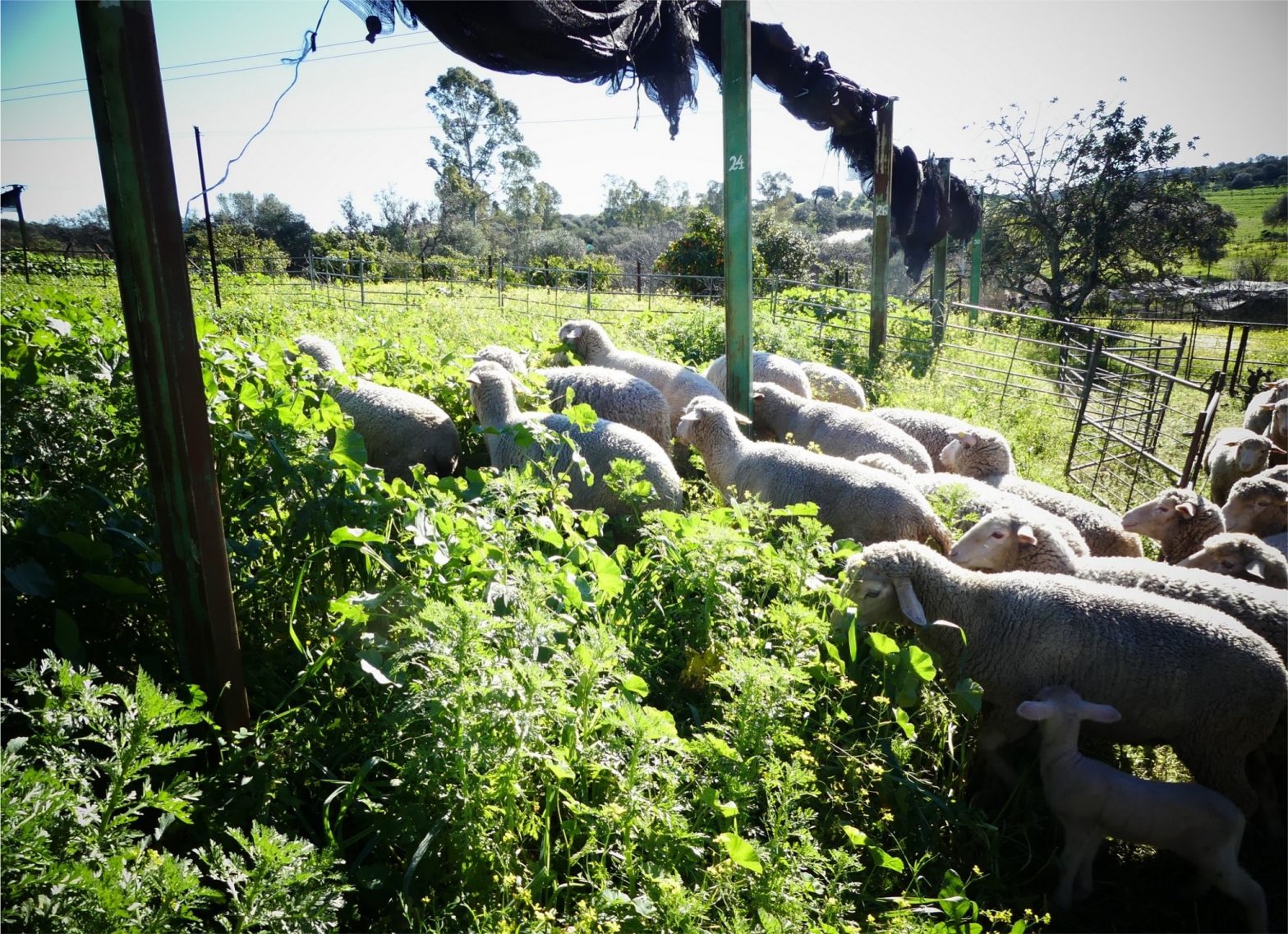
Manejo holístico en Los Portales – Holistic management at Los Portales
La luz del sol se convierte en hierba; el estiércol se transforma en fertilidad; la lluvia recarga los acuíferos; y la vida engendra más vida. Estos ciclos de la vida, tal y como se enseñan en el Manejo Holístico, son fundamentales para el funcionamiento de los ecosistemas.
Allan Savory
Desde los inicios de la comunidad, hace 40 años, las cabras han sido nuestras compañeras de proyecto. Empezamos con unas pocas cabras y a lo largo de los años el rebaño ha ido aumentando, llegando a superar el centenar en ocasiones. Pastan libremente en el bosque, en más de 100 hectáreas de monte de encina, acebuche, lentisco, palmito, jara y romero. Nuestra finca está rodeada de otros cotos de caza. Al principio no había vallas y la persona que hacía de pastor cuidaba de que no fueran a las fincas vecinas y los traía de vuelta a casa. Pero hace 20 años decidieron vallar nuestra granja y eso tuvo sus consecuencias.
Como estábamos rodeados de cotos de caza, nuestra granja se convirtió en refugio de ciervos y jabalíes. Así que, entre nuestras cabras que pastaban a su antojo (un animal bastante caprichoso y sibarita) y la fauna salvaje, nos dimos cuenta de que el pasto empezaba a deteriorarse.
Estuvimos indagando sobre nuevas formas de pastoreo cuando conocimos el manejo holístico a través de una formación impartida por Owen Hablutzel en la que participamos en 2015. Allí nos metimos.
El manejo holístico es un sistema de planificación y toma de decisiones que ayuda a agricultores y ganaderos a gestionar mejor los recursos y obtener beneficios medioambientales, económicos y sociales de forma sostenible y regenerativa. Su creador fue Allan Savory, un ecologista sudafricano que desarrolló esta técnica a partir de una nueva visión de la regeneración del suelo para invertir el proceso de desertización. Al principio también compartía la opinión general de que los animales desgastan el suelo y provocan la desertización, por lo que hay que reducir el número de animales para que la tierra descanse. Para ello sacrificó miles de elefantes. Desgraciadamente, descubrió no sólo que el problema persistía, sino que había empeorado. Fue una constatación tan dolorosa que dedicó su vida a encontrar una solución. Llegó a la conclusión de que la única opción viable era imitar a la naturaleza, es decir, usar rebaños agrupados y en movimiento como sustituto de la dinámica natural entre manadas de herbívoros y depredadores (ante la amenaza, el rebaño pasta junto, por un lado, y no puede permanecer demasiado tiempo en el mismo lugar, por otro).
En resumen, en el pastoreo holístico, los animales se desplazan de una parcela a otra rápidamente en la estación de crecimiento vegetativo y más lentamente en los meses de verano, dando a la planta tiempo suficiente para regenerarse. El impacto de los animales tiene que ser el mayor posible: muchos excrementos en el mismo lugar (en las tierras áridas, la materia orgánica no procede de la descomposición de la vegetación porque no hay suficiente humedad, sino de los excrementos de los rumiantes). Nuestro clima es bastante árido y seco (más de 6 meses al año sin agua).
Para aplicarlo en Portales hicimos dos intentos: uno con un pastor eléctrico (difícil con las cabras, pero no imposible, porque cuando reciben la descarga, saltan y se lo llevan). El motivo por el que no funcionó fue otro: por la noche los jabalíes hacían de las suyas y nos pasábamos horas todos los días para repararlo (además de tener que vigilar a las cabras mientras estaban con el pastor eléctrico). Así que tuvimos que abandonar esta iniciativa. El otro intento fue con cercados fijos: cercamos una zona de pasto en tres parcelas y las movimos durante el periodo de crecimiento no vegetativo. Era algo, pero nos resultaba difícil ordeñarlas todos los días, moverlas, llevar el agua al rebaño. Así que tomamos otra decisión más drástica: reducir el rebaño y también el tiempo que pastaban. Ahí seguimos.
Para regenerar el suelo decidimos traer ovejas de carne, que son fáciles de manejar y no hay que ordeñarlas a diario. Primero probamos el pastor eléctrico porque podíamos poner las ovejas en las zonas cultivadas, donde no hay jabalíes ni ciervos y el terreno era más «fácil». Pero seguía siendo un sistema muy frágil y laborioso. La opción que utilizamos ahora son puertas con las que se monta y desmonta un corral, que se mueve más o menos rápido según la época del año.
Lo combinamos con la línea clave y estamos observando cómo la tierra es cada vez más fértil, el suelo más esponjoso, menos árido. Hemos tardado 3 o 4 años en ver resultados. Pero merece la pena.
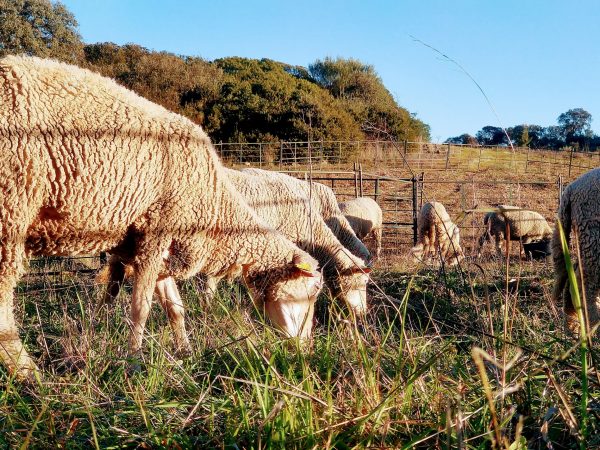
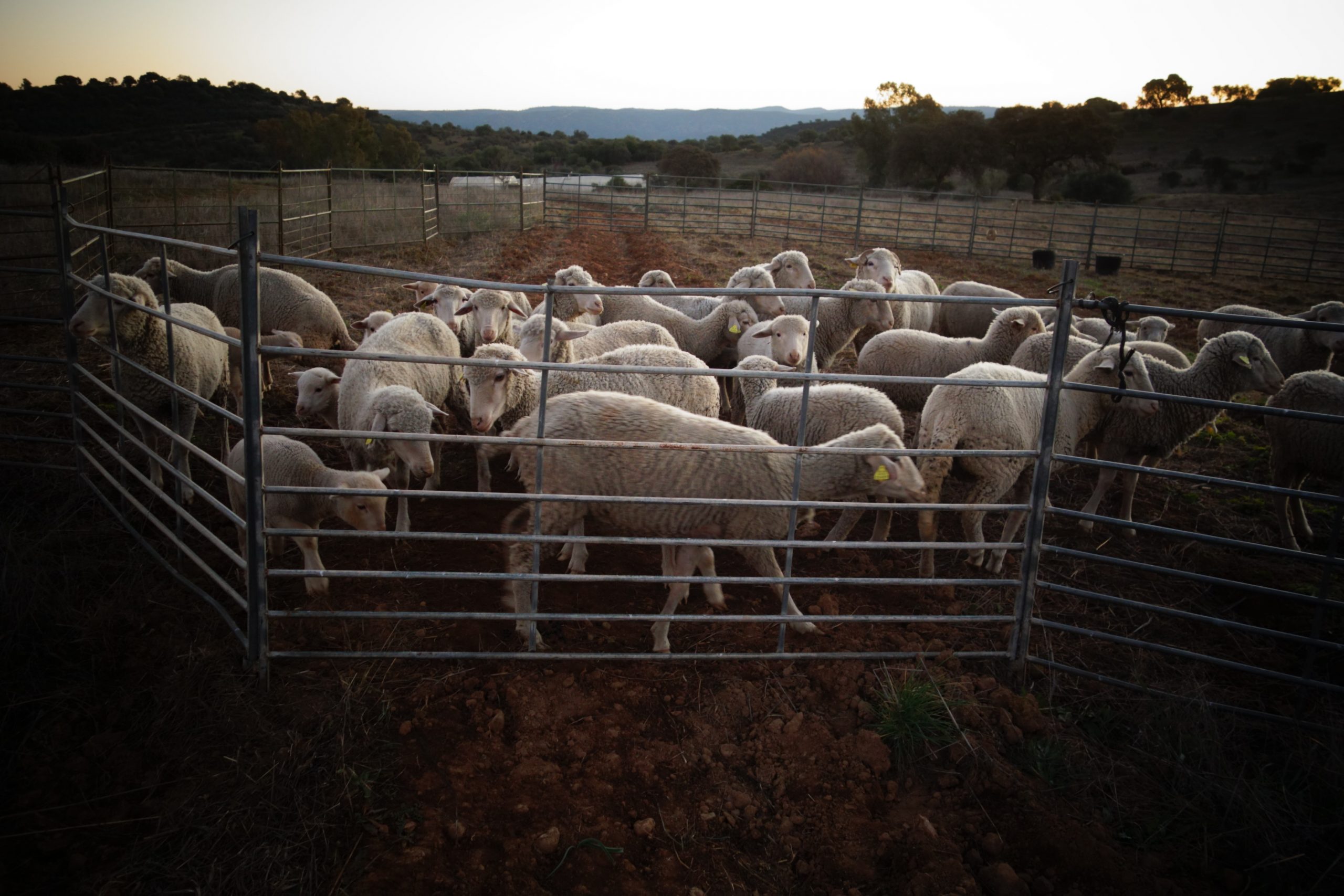


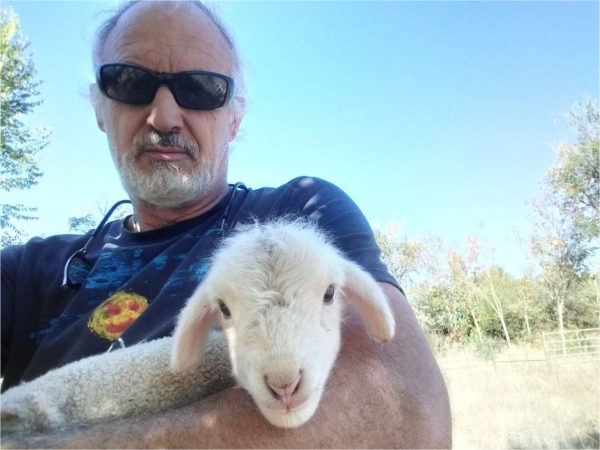
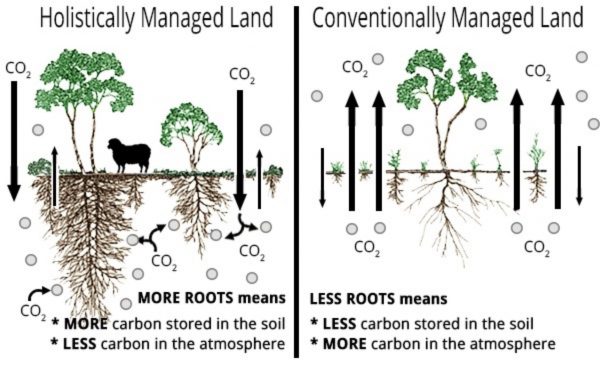
Sunlight converts to grass; dung turns to fertility; rain recharges aquifers; and life begets more life. These cycles of life, as taught in Holistic Management, are critical for ecosystem function.
Allan Savory
Since the beginning of the community, 40 years ago, goats have been our project companions. We started with a few goats and over the years the herd has increased, reaching more than 100 at times. They graze freely in the forest, in more than 100 hectares of hills of holm oak, wild olive, mastic, palmetto, rockrose and rosemary. Our farm is surrounded by other hunting grounds. At the beginning there were no fences and the person who acted as a shepherd took care that they did not go to the neighbouring farms and brought them back home. But 20 years ago they decided to fence off our farm and that had its consequences.
As we were surrounded by hunting grounds, our farm became a refuge for deer and wild boar. So, between our goats that grazed as they pleased (a rather capricious and sybaritic animal) and the wild fauna, we noticed that the pasture was beginning to deteriorate.
We were inquiring about new ways of grazing when we learned about holistic management through a training given by Owen Hablutzel in which we participated in 2015. That’s where we went.
Holistic management is a planning and decision-making system that helps farmers and ranchers better manage resources and reap environmental, economic and social benefits in a sustainable and regenerative way. Its creator was Allan Savory, a South African ecologist, who developed this technique from a new vision of soil regeneration to reverse the process of desertification. Initially he also shared the general view that animals wear down the soil and cause desertification, so the number of animals must be reduced to allow the land to rest. He slaughtered thousands of elephants for this purpose. Unfortunately, he discovered not only that the problem persisted, but that it had worsened. It was such a painful realisation that he devoted his life to finding a solution. He came to the conclusion that the only viable option was to imitate nature, i.e. to use herds herded together and on the move as a substitute for the natural dynamics between herds of herbivores and predators (in the face of threat the herd grazes together on the one hand, and cannot stay in the same place for too long on the other).
In short, in holistic grazing, the animals move from one plot to another quickly in the vegetative growing season and more slowly in the summer months, giving the plant enough time to regenerate. The impact of the animals has to be as great as possible: a lot of excrement in the same place (in arid lands, the organic matter does not come from the decomposition of the vegetation because there is not enough humidity, but from ruminant droppings). Our climate is quite arid and dry (more than 6 months a year without water).
To apply it in Portales we made two attempts: one with an electric shepherd (difficult with the goats, but not impossible, because when they receive the shock, they jump out and take it with them). The reason why it didn’t work was another: at night the wild boars were doing their thing and we spent hours every day to repair it (as well as having to keep an eye on the goats while they were with the electric shepherd). So we had to abandon this initiative. The other attempt was with fixed fencing: we fenced off an area of pasture in three plots and moved them during the non-vegetative growth period. It was something, but it was difficult for us to milk them every day, to move them, to carry the water to the herd. So we took another more drastic decision: to reduce the herd and also reduce the time they grazed. That’s where we continued.
To regenerate the soil we decided to bring in meat sheep, which are easy to handle and do not have to be milked daily. We first tried the electric shepherd because we could put the sheep in the cultivated areas where there are no wild boars or deer and the terrain was «easier». But it was still a very fragile and laborious system. The option we use now are gates with which a corral is assembled and disassembled, which moves faster or slower depending on the time of the year.
We combine it with the key line and we are observing how the land is becoming more fertile, the soil more spongy, less arid. It has taken 3 or 4 years to see results. But it is worth it.